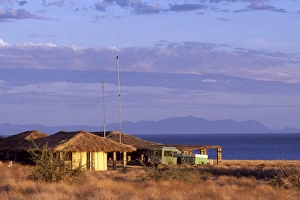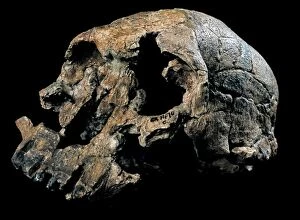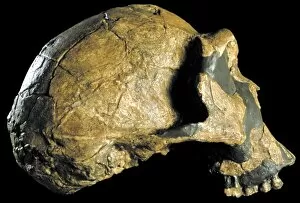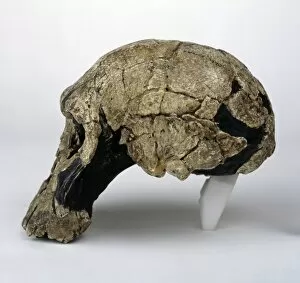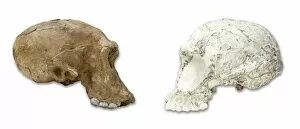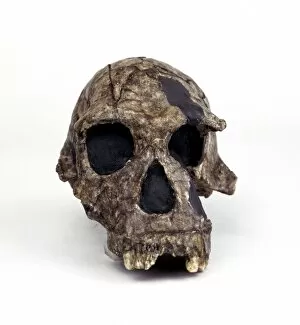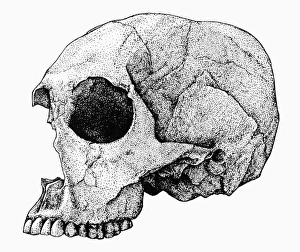Koobi Fora Collection
"Exploring the Ancient Origins at Koobi Fora" Koobi Fora, a renowned research center situated on the shores of Lake Turkana
All Professionally Made to Order for Quick Shipping
"Exploring the Ancient Origins at Koobi Fora" Koobi Fora, a renowned research center situated on the shores of Lake Turkana, offers a captivating glimpse into our evolutionary past. As the sun sets over the lake, flamingos gracefully soar through the sky, adding an ethereal touch to this remarkable landscape. Within these hallowed grounds lie invaluable treasures that have shaped our understanding of human evolution. The skulls of Homo erectus and Homo habilis stand as silent witnesses to our ancient ancestors' existence. These fossilized remains provide crucial insights into their physical characteristics and behaviors. The craniums of Homo rudolfensis (KNM-ER 1470) C015 / 6930 and Homo ergaster (KNM-ER 3733) C015 / 6927 transport us back in time, allowing us to envision their once vibrant lives amidst this breathtaking terrain. The vastness of Lake Turkana serves as a constant reminder that these early humans thrived in harmony with nature. As we delve deeper into history, another fascinating discovery awaits - the Homo ergaster craniums (KNM-ER 3733) C016 / 5095 and C016 / 5094. These relics offer intricate details about cranial features unique to this species, shedding light on their cognitive abilities and evolutionary advancements. Amongst these remnants lies the enigmatic Homo habilis cranium (KNM-ER 1813) C016 / 5091 – a testament to humanity's ingenuity during its earliest stages. This astonishing find challenges conventional notions by revealing glimpses into our ancestors' intellectual capabilities. Koobi Fora stands not only as an archaeological treasure trove but also as a symbol of scientific dedication and curiosity. Researchers tirelessly unravel mysteries hidden within each artifact found here, piecing together fragments from millions of years ago.



